Faravahar: A Secular National Symbol of Zoroastrians
Faravahar, also known as Farr-e Kiyani, is the secular national symbol of Iran’s state religion Zoroastrianism. Know about the brief history, historic influence, and several interpretations of this popular symbol.
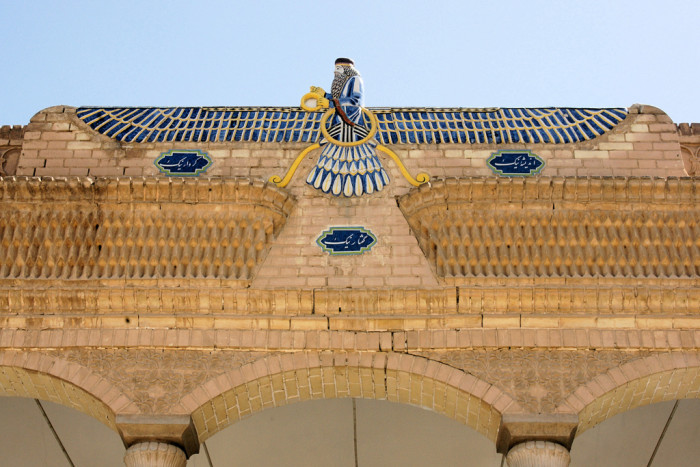
One of the popular symbols of Iranian culture, Faravahar or Farr-e Kiyani symbolizes its (pre-Islamic Persia and Iranian nationalism) state religion Zoroastrianism. Among Iranians, it is the most worn pendant and is a secular national symbol rather than merely being a religious symbol. The symbol signifies the three basic tenets and principles of Zoroastrianism: good thoughts, good deeds, and good words.
A Brief History About Faravahar
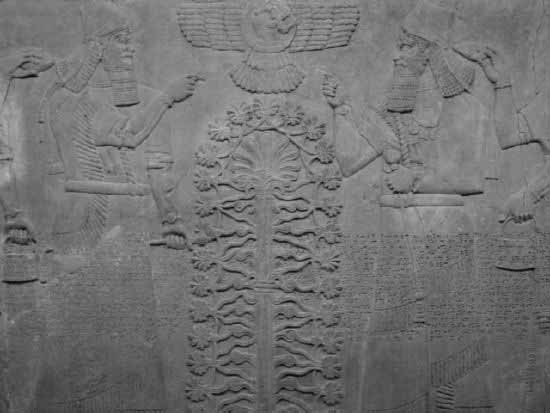
The history of the Iranian national emblem Faravahar’s design finds its origin in ancient Egypt. The stylized bird pattern called spread-eagle, as is known as heraldry, features a flying bird having outstretched wings, tails, and legs. These designs have also been used in different cultures all through history, even in America where its government seal features a spread-eagle.
An Egyptian spread-eagle device appears on the treasure of King Tutankhamun which has a bird's body with a human head and the hieroglyphic symbols are clasped in the outstretched talons. The Egyptian designs close to Faravahar feature a sun disc with wings. This winged sun disc depicts the hawk-god Horus who was believed to be an incarnation of Pharaoh, god-king by the ancient Egyptians.
Since the beginning, the winged disc was a symbol of divine kingship or the divine favor upon a king. Around the 2nd millennium BC, this design had moved from Egypt to the ancient Near East. Appearing above the carved figure of a Hittite king, it symbolized a god's favor in the form of a spread-eagle.
The proto-Faravahar symbol may be having a native Mesopotamian origin, combined with the Egyptian symbol in ancient Assyria. Assyrian art also identifies the winged disc with divinity and divine protection of the king and people. It is both with and without a human figure.
Ferdowsi’s Shahnameh is an Iranian national epic and it has stories (partly historical and partly mythical) from pre-Islamic Zoroastrian times. Visited by many Iranians every year, Ferdowsi’s tomb includes the Faravahar symbol.
After the 1979 Islamic Revolution, the Lion and Sun that were part of Iran's original national flag had been banned by the government from public places to prevent people from being reminded of life before the revolution. However, Faravahar symbols were not removed. Thus, the Faravahar symbol turned into a national symbol among the people and was tolerated by the government compared to the Lion and Sun.
The Historical Influence of Zoroastrianism’s National Emblem
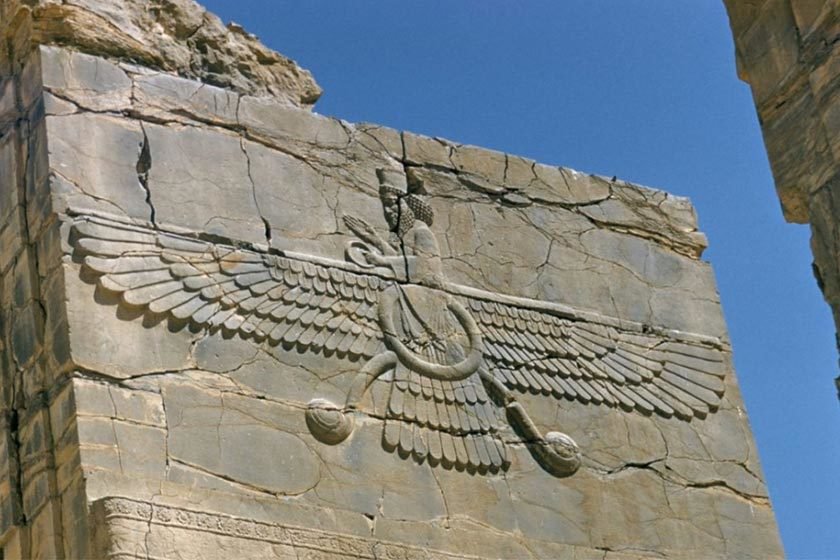
The winged disc has a rich history in the art & culture of the ancient Near and the Middle East. the symbol has historical influence with the “winged sun” hieroglyph that appears on Bronze Age royal seals (Luwian SOL SUUS, particularly symbolizing royal power). In the Neo-Assyrian age, a human bust is added to the disc, the "feather-robed archer" interpreted as symbolizing Ashur.
Who is Depicted on This Faravahar?
The symbol is currently believed to depict a Fravashi (a guardian angel), from which the symbol derives its name. Since it appears on royal inscriptions, it is also believed to represent ‘Divine Royal Glory’ (khvarenah) or the Fravashi of the king or the divine mandate that was the foundation of a king’s authority. This reflects the current belief that it depicts Fravashi. However, the physical description of Fravashi does not exist in Avesta (sacred texts of Zoroastrianism).
Traditional Interpretation of Faravahar
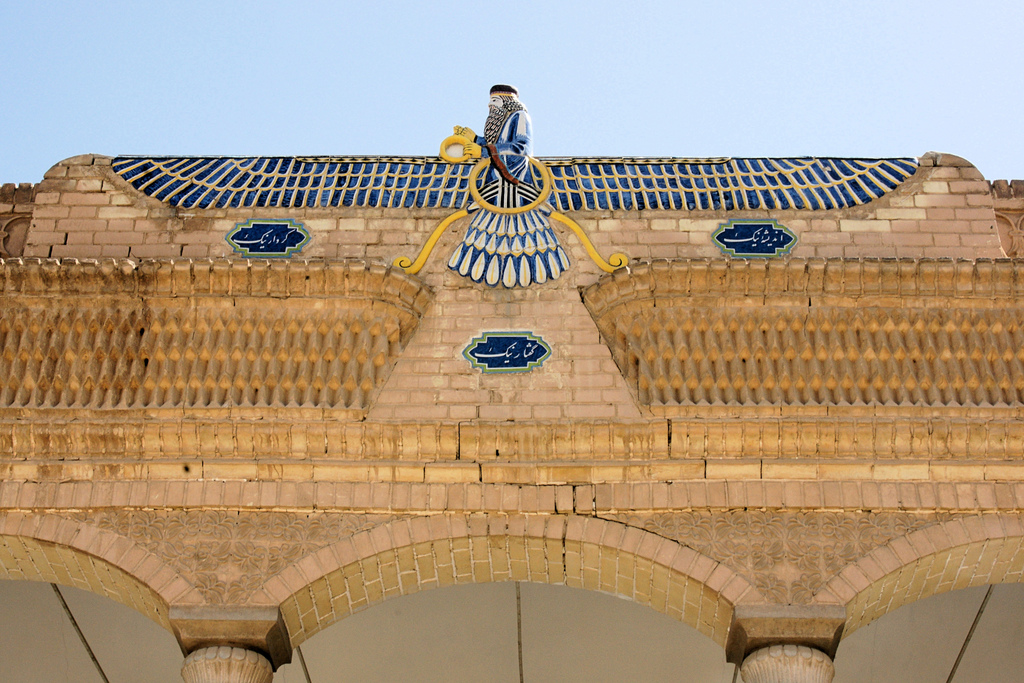
The face of the symbol ‘Faravahar’ looks like the face of a human being and so it suggests a connection to mankind. The two wings having three main feathers demonstrate three symbols of 'good reflection' 'good words' and 'good deed' which are also the basis of flight and progress.
The lower part of the symbol comprises three parts that symbolize 'bad reflection,' 'bad words,' and 'bad deed'. And these are the reasons for misery and misfortune for humans. The two loops on either side represent Angra Minu (at the back) and Sepanta Minu (toward face). This also demonstrates that we should move ahead in the direction of good and from averting bad.
The middle circle of the symbol’s trunk stands for our immortal spirit that neither has a beginning nor an end. The hand pointing upward shows that we need to struggle to thrive, while the other hand holds a ring (ring of the covenant), denoting loyalty and faithfulness which forms the basis of Zarathustra's philosophy.
Modern Interpretation of This Zoroastrian Symbol
In modern-day Zoroastrianism, Faravahar is said to be a reminder of one’s life purpose. And that is to live in a way that the soul makes an advancement toward frashokereti, or union with the supreme divinity in Zoroastrianism ‘Ahura Mazda’.
Even though there are several interpretations of every element of the symbol, none are older than the 20th century. Since the beginning of the 20th century, the Faravahar symbol was discovered in public places and became a known icon among all Iranians.
Folk Interpretation of Faravahar
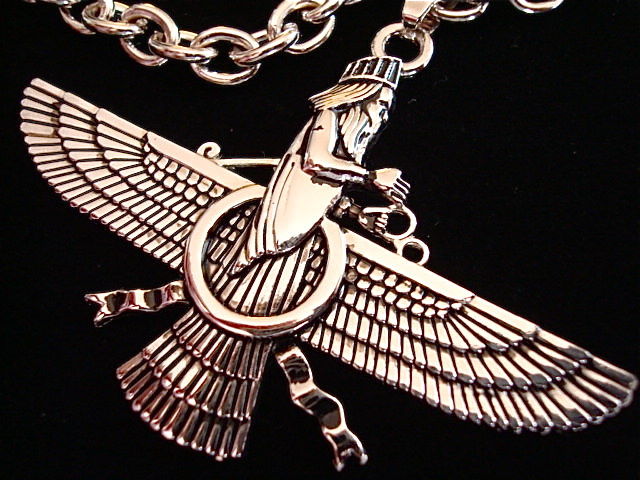
The Winged Disc was embraced as a symbol of Zoroastrianism once and then it entered into the community not just as a graphic symbol but folk motif also. The Zoroastrian faravahar was “standardized ” to the Persepolis model and there are several adaptations of the Faravahar symbol. This “standard” Faravahar emerges over the heads of Persian kings on Persepolis’ walls.
This emblem recognizes Zoroastrian publications and adorns the religious temples and places of gathering. It has also been carved into marble and semi-precious stones, made into pieces of jewelry, carved woven into wall hangings, glazed onto ceramic heirlooms, and even into paper and plastic stickers.
Apart from its extensive use as a heraldic and decorative motif, several interpretations of the symbol have appeared that had little to no relevance with history. None of these have been found in the Faravahar extant scriptures. However, the Zoroastrian priests and leaders use the emblem as a visual tool for illustrating the basic elements of religion, especially to educate children. For instance, a book named “Message of Zarathushtra” by Iranian priest Bahram Shahzadi has a chapter called “What is Faravahar?”.
Another folk interpretation of Faravahar is made by a knowledgeable Zoroastrian layman. Some descriptions are similar to Shahzadi’s book but are rather more detailed. As shown in Shahzadi’s book, the open wings depict The Threefold Path and the closed skirt is representative of the human figure inside the disc is representative of evil choices split into 3 layers: bad thoughts, words, and deeds. The circle represents the law of consequences that is comprised in the divine ASHA, the Zoroastrian concept of the divinely created order of the universe.
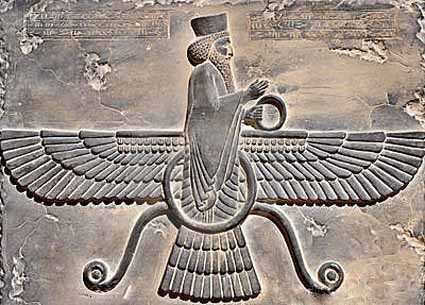
And its other interpretation comes from a cryptic perspective. Some Zoroastrians are influenced by Theosophy, an eclectic ocular movement of the 19th century. Hindu and Buddhist esoteric ideas to Zoroastrianism, such as reincarnation, karma, and astral planes. For these believers, the Faravahar is a symbol of the soul's progression through many lives. The man’s head is a reminder of God-given free will. The ring is symbolic of the cycles of rebirths on Earth and other planes of reality. The central circle signifies the soul; the two wings are energies helping the soul to advance and evolve.
The five layers of feathers in the wings (a detailed version of the Persepolis emblem) represent the five Gatha hymns of the Prophet, the five senses, the five divisions of the Zoroastrian day, and also five esoteric stages that the soul must go through on its way to God.
Just like in the other interpretations, the two streamers signify the two choices before humans: the Good Mentality and the Evil Mentality. The tail (not mentioned in the other interpretations) is the soul’s "rudder" for balancing between the Good and Evil forces.
After millennia of an enigma, the Faravahar emblem is now shining among new people of new continents. Here’s hoping that with the symbol’s widespread significance of light, righteousness, wisdom, and God's grace, it finds a place among the great symbols of spirit so as to inspire people on the Earth.
Popular Posts
Top 10 Sharpest & Deadliest Swords In History
In classic mythological movies, books and television, we’ve seen those audacious sword-wielding heroes smiting the enemi...
Augustus Perez
List of Water Deities from Different Mythologies
Water deities are the gods and goddesses who had the powers to control the elements of water and ruled over all the fresh and saltwater of the earth. Here’s a list of water deities from different mythologies.
Rishika Gupta
Winged Lion: The Terrifying Mythical Creature In Different Mythologies
A mythological creature, a winged lion dates back to ancient times. This flying lion-like creature has origins in Heraldry, Christianity, Mesopotamian, and Greek mythologies.
Ethan Stephans








